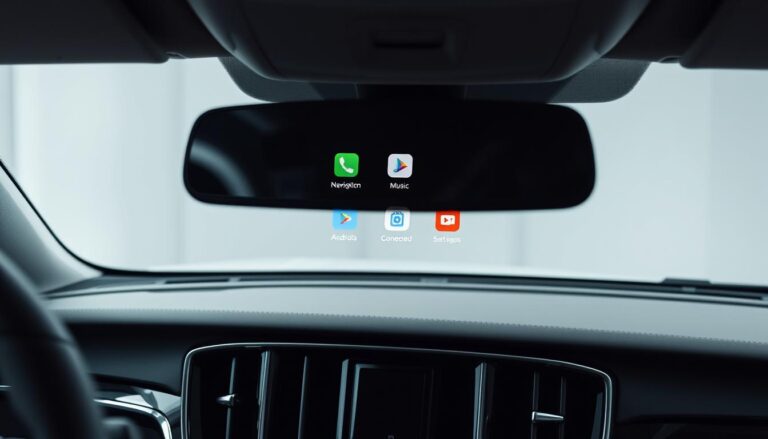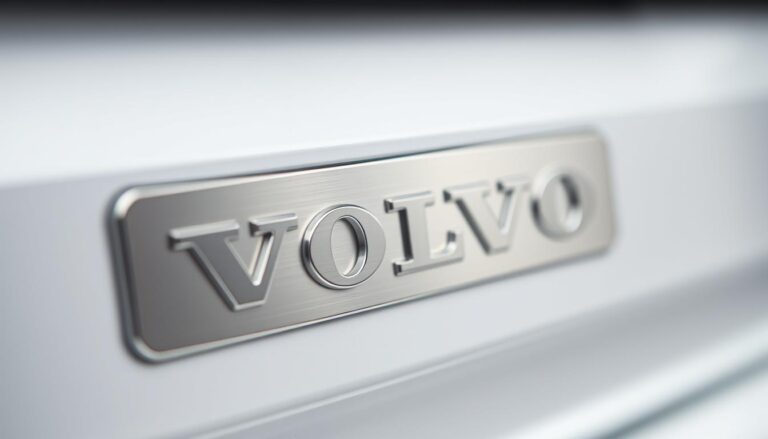When winter roads turn treacherous or you’re navigating challenging terrain, Volvo All-Wheel Drive technology delivers exceptional traction, stability, and confidence. Volvo has engineered their AWD systems to react instantly to changing conditions, seamlessly distributing power where it’s needed most. But which Volvo models come with AWD? How does their system compare to competitors? And is it worth the investment?
This comprehensive guide answers all your questions about Volvo’s approach to all-wheel drive technology.
Volvo’s Approach to All-Wheel Drive Technology
Volvo’s philosophy toward all-wheel drive centers on three core principles: safety, performance, and adaptability. Unlike some manufacturers who treat AWD as merely a performance feature, Volvo integrates it into their holistic safety approach. Their systems are designed to provide maximum stability and control in all driving conditions, from snowy highways to rain-slicked city streets.
Evolution of Volvo AWD Systems
Volvo’s journey with all-wheel drive technology has evolved significantly over the decades:
- First Generation (1990s): Volvo’s early AWD systems used viscous coupling technology that transferred power to the rear wheels when front wheels slipped.
- Haldex Integration (Early 2000s): Volvo adopted the Haldex coupling system, which provided more responsive power distribution and better fuel efficiency.
- Instant Traction (Mid-2000s): This enhancement pre-charged the AWD system to eliminate the brief delay in power transfer to rear wheels.
- Electronic Control (2010s): Advanced electronic management systems allowed for more precise torque distribution based on multiple sensor inputs.
- Electric AWD (Current): In their latest hybrid and electric vehicles, Volvo uses electric motors to power rear wheels, creating an electric AWD system.
Today, Volvo offers two primary types of all-wheel drive systems across their lineup: mechanical AWD for conventional powertrains and electric AWD for their hybrid and electric vehicles.
Volvo Models with All-Wheel Drive

Volvo offers all-wheel drive across most of their vehicle lineup, though availability may vary by trim level and powertrain. Here’s a comprehensive breakdown of current Volvo models with AWD options:
SUV Models with AWD
| Model | AWD System Type | Standard or Optional | Available Powertrains |
| Volvo XC90 | Mechanical AWD / Electric AWD (Recharge) | Standard on most trims | Mild Hybrid, Plug-in Hybrid |
| Volvo XC60 | Mechanical AWD / Electric AWD (Recharge) | Standard on most trims | Mild Hybrid, Plug-in Hybrid |
| Volvo XC40 | Mechanical AWD / Electric AWD (Recharge) | Optional on base, Standard on higher trims | Mild Hybrid, Full Electric |
| Volvo EX30 | Electric AWD | Optional (Twin Motor variant) | Full Electric |
| Volvo EX90 | Electric AWD | Standard | Full Electric |
Sedan and Wagon Models with AWD
| Model | AWD System Type | Standard or Optional | Available Powertrains |
| Volvo S90 | Mechanical AWD / Electric AWD (Recharge) | Optional on base, Standard on higher trims | Mild Hybrid, Plug-in Hybrid |
| Volvo S60 | Mechanical AWD / Electric AWD (Recharge) | Optional on base, Standard on higher trims | Mild Hybrid, Plug-in Hybrid |
| Volvo V90 | Mechanical AWD / Electric AWD (Recharge) | Optional on base, Standard on Cross Country | Mild Hybrid, Plug-in Hybrid |
| Volvo V60 | Mechanical AWD / Electric AWD (Recharge) | Optional on base, Standard on Cross Country | Mild Hybrid, Plug-in Hybrid |
| Volvo C40 | Electric AWD | Optional (Twin Motor variant) | Full Electric |
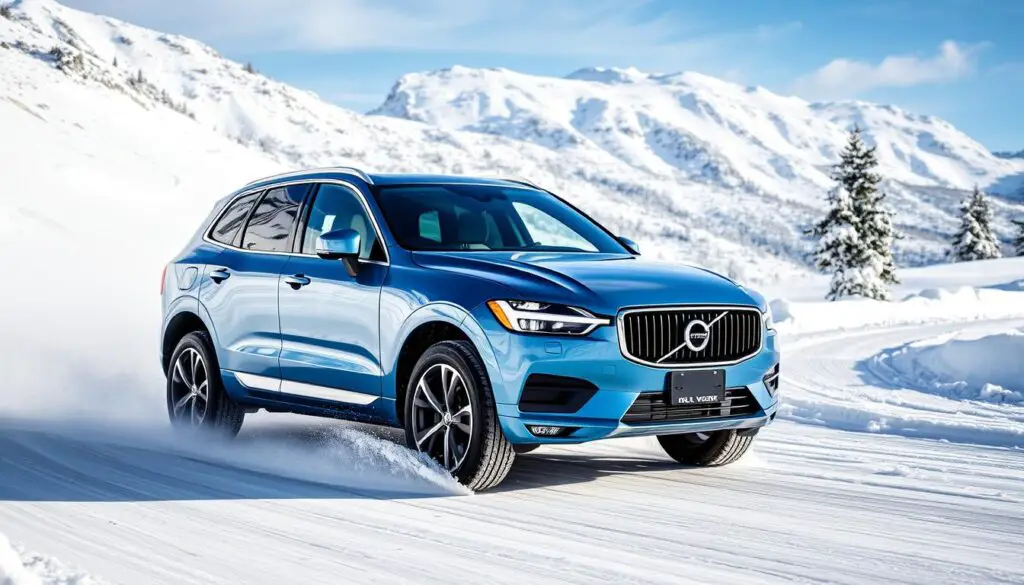
It’s worth noting that Volvo’s trim structure typically makes AWD standard on higher-end configurations, while it remains optional on base models. For the most current information on specific model availability, checking Volvo’s official website is recommended as offerings can change with model year updates.
How Volvo All-Wheel Drive Compares to Competitors
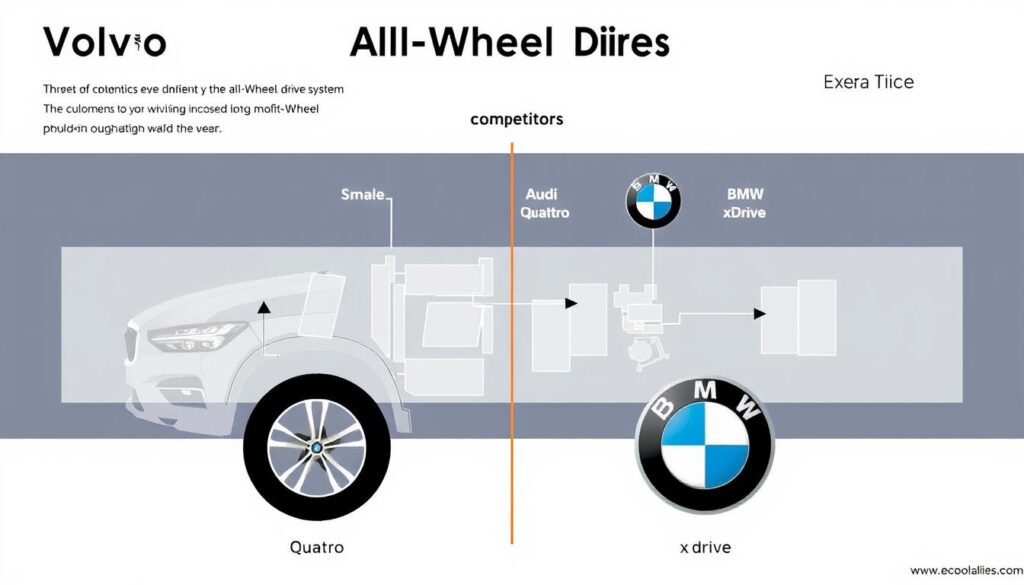
To understand how Volvo’s AWD system stacks up against the competition, let’s compare it with other premium manufacturers’ approaches:
| Feature | Volvo AWD | Audi Quattro | BMW xDrive | Mercedes 4MATIC |
| Default Torque Split | 95:5 (front:rear) | 40:60 (front:rear) | 40:60 (front:rear) | 45:55 (front:rear) |
| System Type | Haldex-based (on-demand) | Torsen/Crown gear (permanent) | Multi-plate clutch (on-demand) | Multi-plate clutch (on-demand) |
| Response Time | Instant with pre-charging | Immediate (always engaged) | ~100 milliseconds | ~150 milliseconds |
| Max Torque Transfer | Up to 50% to rear | Up to 85% to rear | Up to 100% to either axle | Up to 70% to either axle |
| Fuel Efficiency Focus | High | Medium | Medium | Medium |
| Integration with Safety | Extensive | Moderate | Moderate | Moderate |
Key Differences in Philosophy
Volvo’s Approach: Volvo’s AWD system prioritizes safety and predictable handling above all else. Their Haldex-based system is designed to be proactive in detecting traction loss and seamlessly engaging the rear wheels. The system works in conjunction with Volvo’s comprehensive safety suite, making it particularly effective in hazardous conditions.
Volvo’s Instant Traction technology pre-charges the hydraulic pump in the AWD system, eliminating the brief delay that older on-demand systems experienced when transitioning from front-wheel to all-wheel drive.
Competitor Approaches: By contrast, Audi’s Quattro system emphasizes performance with its permanent AWD engagement and rear-biased torque distribution. BMW’s xDrive and Mercedes’ 4MATIC systems take a similar approach to Volvo but with a rear-wheel bias that prioritizes sporty handling characteristics.
While competitors may offer more aggressive torque vectoring for performance driving, Volvo’s system is optimized for stability and predictability in everyday driving situations, particularly in adverse weather conditions.

Benefits of Volvo All-Wheel Drive
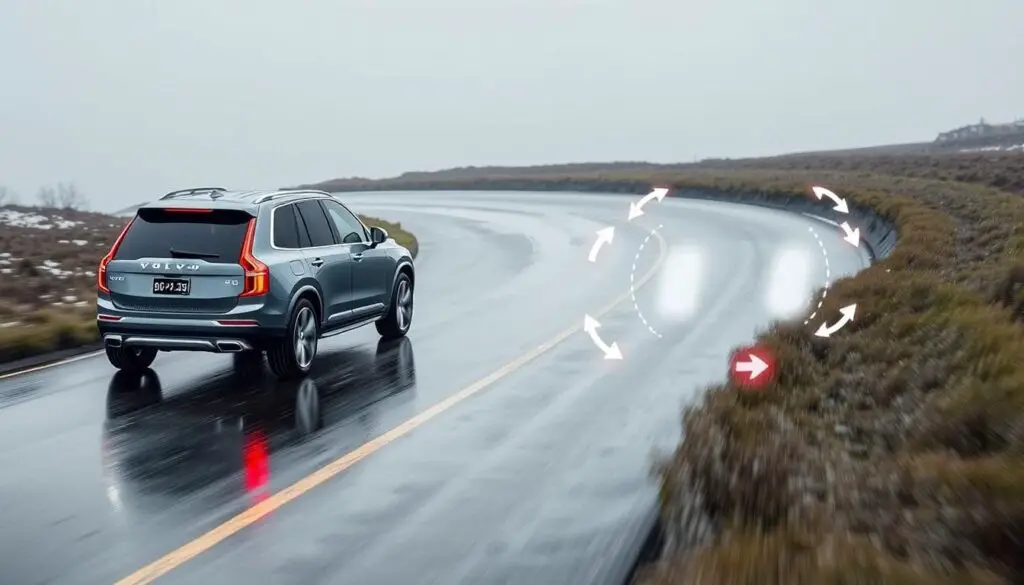
Safety Enhancements
Volvo’s AWD system significantly improves safety through:
- Enhanced Traction: By distributing power to all four wheels, Volvo AWD vehicles maintain better grip on slippery surfaces, reducing the risk of skidding.
- Improved Stability: The system works with Volvo’s Electronic Stability Control to prevent understeer and oversteer in emergency maneuvers.
- Reduced Hydroplaning: AWD helps maintain contact with the road during heavy rain, when water can cause tires to lose contact with the pavement.
- Better Braking: With power distributed to all wheels, braking forces can be more evenly applied, potentially reducing stopping distances on slippery surfaces.
Performance Advantages
Beyond safety, Volvo’s AWD system delivers noticeable performance benefits:
- Improved Acceleration: With power going to all four wheels, Volvo AWD vehicles can accelerate more quickly and efficiently, especially from a standstill.
- Enhanced Handling: The system improves cornering ability by sending power to the wheels with the most grip, reducing understeer that’s common in front-wheel drive vehicles.
- Better Towing Capability: AWD provides additional stability when towing, making it easier to pull trailers or boats, especially on inclines or slippery boat ramps.
- Smoother Power Delivery: The system ensures power is delivered smoothly to the road, eliminating the torque steer that can affect powerful front-wheel drive vehicles.
Weather and Terrain Adaptability
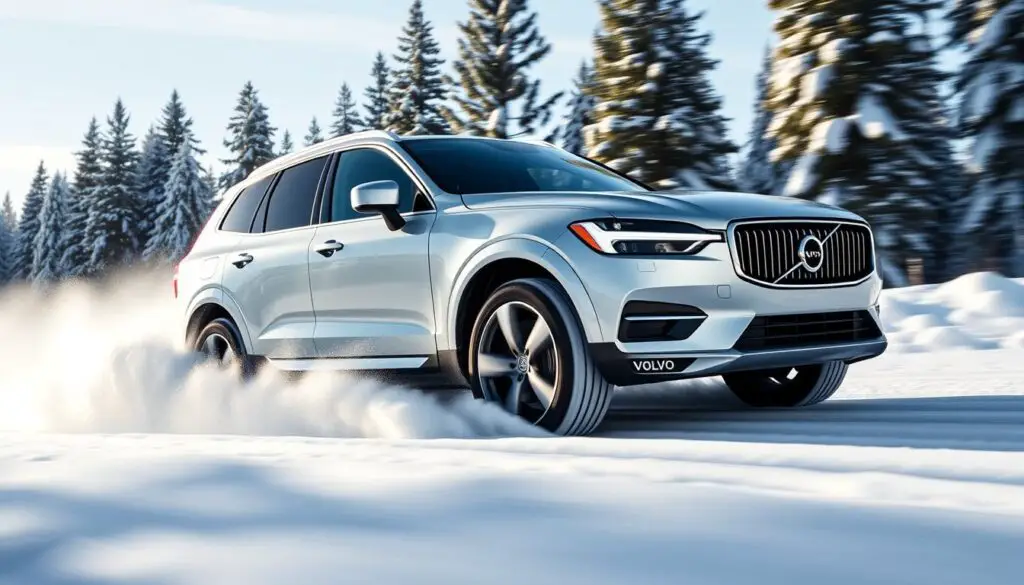
Volvo’s AWD system truly shines in challenging weather and terrain conditions:
- Snow and Ice: The system constantly monitors wheel slip and can instantly redistribute power to maintain traction on snow-covered or icy roads.
- Rain: On wet roads, AWD reduces the risk of hydroplaning and improves cornering stability.
- Unpaved Roads: When driving on gravel, dirt, or other loose surfaces, AWD provides more consistent traction and stability.
- Hill Climbing: The system makes ascending steep hills easier and safer by distributing power to the wheels with the most grip.
Experience Volvo AWD Confidence
Discover how Volvo’s All-Wheel Drive can transform your driving experience in challenging conditions. Schedule a test drive today to feel the difference firsthand.
Technical Details of Volvo AWD Systems

Mechanical AWD System
Volvo’s conventional AWD system uses a Haldex coupling, which is an electronically controlled mechanical device that distributes power between the front and rear axles. Here’s how it works:
- Default State: In normal driving conditions, power is primarily sent to the front wheels (about 95%) to maximize fuel efficiency.
- Slip Detection: Multiple sensors monitor wheel speed, throttle position, engine torque, and other parameters to detect potential wheel slip.
- Power Transfer: When slip is detected or anticipated, the system engages a multi-plate clutch that transfers power to the rear wheels.
- Instant Traction: Later generations include a pre-charging feature that keeps the system ready to engage instantly, eliminating the delay found in earlier systems.
- Electronic Control: The entire process is managed by a dedicated control unit that works in conjunction with the vehicle’s stability and traction control systems.
Electric AWD System
In Volvo’s hybrid and electric vehicles, the AWD system works differently:
- Dual Motor Setup: These vehicles use separate power sources for the front and rear axles—typically an internal combustion engine for the front wheels and an electric motor for the rear wheels in hybrids, or separate electric motors in fully electric models.
- Independent Control: The system can precisely control power delivery to each axle independently, offering more flexibility than mechanical systems.
- Instant Response: Electric motors provide immediate torque, allowing for even faster response times than mechanical AWD systems.
- Energy Recovery: The electric components can recover energy during braking, improving overall efficiency.
- No Mechanical Connection: Without a physical driveshaft connecting the axles, these systems save weight and free up interior space.
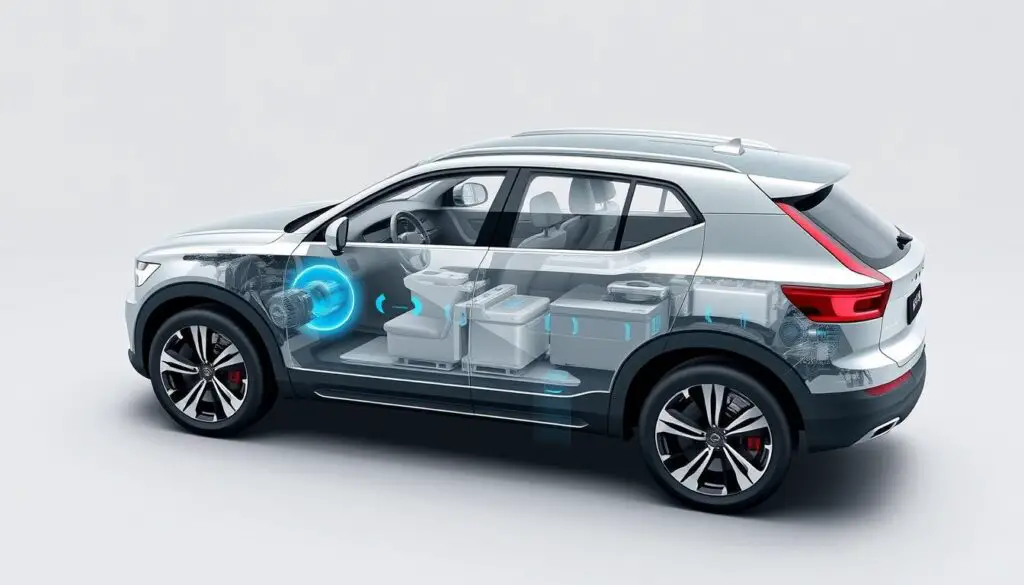
AWD Integration with Other Systems
What makes Volvo’s AWD particularly effective is its integration with other vehicle systems:
- Electronic Stability Control (ESC): Works with AWD to prevent skidding by adjusting braking and engine power.
- Corner Traction Control: Directs power to outside wheels during turns to reduce understeer.
- Hill Descent Control: Available on Volvo SUVs to maintain steady speed when driving down steep, slippery inclines.
- Drive Modes: Many models include selectable drive modes that adjust AWD behavior for different conditions (Comfort, Dynamic, Eco, Off-Road, etc.).
Frequently Asked Questions About Volvo AWD
Is Volvo AWD good in snow?
Yes, Volvo’s AWD system excels in snowy conditions. The Haldex-based system quickly detects wheel slip and transfers power to wheels with better traction. Combined with Volvo’s stability control systems and winter drive modes, Volvo AWD vehicles are among the best performers in snow and ice. The system’s ability to pre-charge (Instant Traction) means there’s no delay in power transfer when conditions suddenly change, which is particularly valuable on partially snow-covered roads.
Does Volvo offer front-wheel drive vehicles?
Yes, Volvo offers front-wheel drive as standard on many of their base model vehicles. This includes entry-level versions of the XC40, S60, and V60. Front-wheel drive models typically offer better fuel economy and a lower purchase price compared to their AWD counterparts. For drivers in regions with mild weather who don’t frequently encounter challenging road conditions, FWD Volvo models still provide excellent performance and safety features.
How does Volvo AWD affect fuel economy?
Volvo’s AWD system is designed to minimize the impact on fuel economy. In normal driving conditions, the system sends approximately 95% of power to the front wheels, operating essentially as a front-wheel drive vehicle. This on-demand approach helps maintain reasonable fuel efficiency compared to permanent AWD systems. However, AWD Volvo models will typically consume about 5-10% more fuel than their front-wheel drive counterparts. In hybrid and electric models, the efficiency impact is even less noticeable due to the more efficient electric AWD implementation.
Do I need winter tires with a Volvo AWD vehicle?
Yes, winter tires are still recommended for Volvo AWD vehicles in areas with regular snow and ice. While AWD significantly improves acceleration and handling in winter conditions, it doesn’t substantially improve braking performance on slippery surfaces. Winter tires provide the necessary grip for all aspects of winter driving—acceleration, cornering, and most importantly, braking. Volvo’s own safety engineers consistently recommend using proper winter tires in cold-weather regions, even with their advanced AWD system.
How does Volvo’s AWD compare to Subaru’s Symmetrical AWD?
Volvo’s AWD and Subaru’s Symmetrical AWD take different approaches. Subaru uses a permanent AWD system that constantly sends power to all four wheels, typically with a 60:40 front-to-rear split. Volvo’s system is primarily front-wheel drive until slip is detected, then power is sent to the rear wheels as needed. Subaru’s system may have a slight advantage in consistent off-road conditions, while Volvo’s system typically offers better fuel economy during normal driving. Both systems are highly effective in winter conditions, though they feel different from the driver’s perspective.
Can Volvo AWD handle off-road driving?
Volvo AWD systems are designed primarily for on-road safety and handling in adverse weather conditions rather than serious off-roading. While models like the XC60 and XC90 can handle moderate off-road situations like dirt roads, gravel paths, and light trails, they lack the specialized off-road features found in dedicated off-road vehicles like low-range transfer cases or locking differentials. For light to moderate off-road use, Volvo’s Cross Country models offer increased ground clearance and specific off-road drive modes that optimize the AWD system for unpaved surfaces.
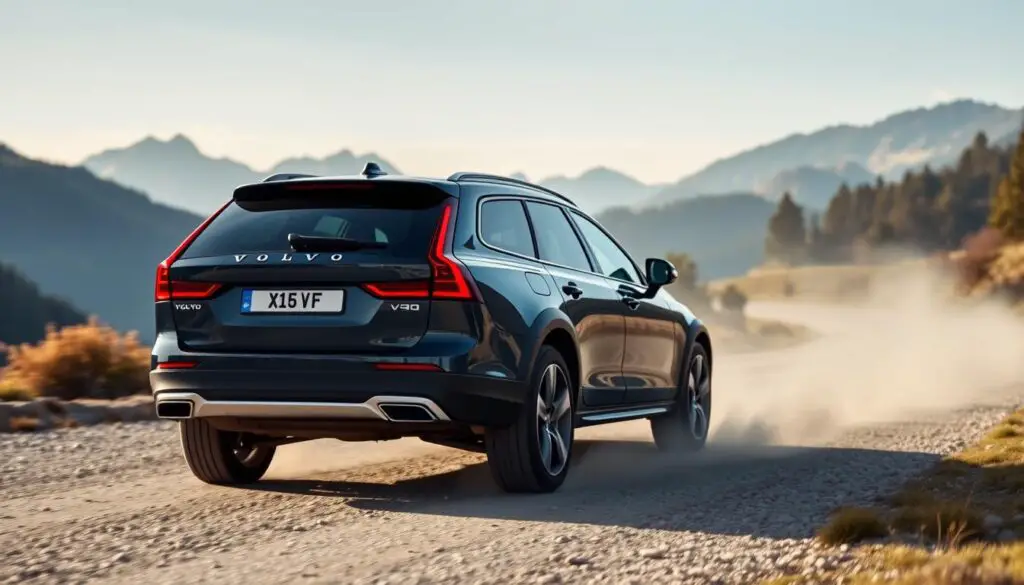
Is AWD Standard or Optional on Volvo Models?
Volvo’s approach to AWD availability varies by model and trim level. Here’s a detailed breakdown:
Models with Standard AWD
- Volvo XC90 Recharge: All plug-in hybrid versions come standard with AWD.
- Volvo XC60 Recharge: All plug-in hybrid versions come standard with AWD.
- Volvo S60/V60 Recharge: All plug-in hybrid versions come standard with AWD.
- Volvo V90 Cross Country: All Cross Country variants come standard with AWD.
- Volvo V60 Cross Country: All Cross Country variants come standard with AWD.
- Volvo EX90: All variants of this fully electric SUV come with dual-motor AWD.
Models with Optional AWD
- Volvo XC90: AWD is optional on base trim, standard on higher trims.
- Volvo XC60: AWD is optional on base trim, standard on higher trims.
- Volvo XC40: AWD is optional on base trim, standard on higher trims.
- Volvo S90: AWD is optional on base trim, standard on higher trims.
- Volvo S60: AWD is optional on base trim, standard on higher trims.
- Volvo V90: AWD is optional on all non-Cross Country trims.
- Volvo V60: AWD is optional on all non-Cross Country trims.
- Volvo C40 Recharge: Available in both single-motor (FWD) and dual-motor (AWD) configurations.
- Volvo EX30: Available in both single-motor (FWD) and dual-motor (AWD) configurations.

The cost premium for adding AWD to a Volvo model typically ranges from $2,000 to $3,500 depending on the specific model and trim level. This price difference reflects not only the additional hardware but also the engineering that integrates the AWD system with Volvo’s comprehensive safety and performance features.
When Is Volvo AWD Worth Considering?
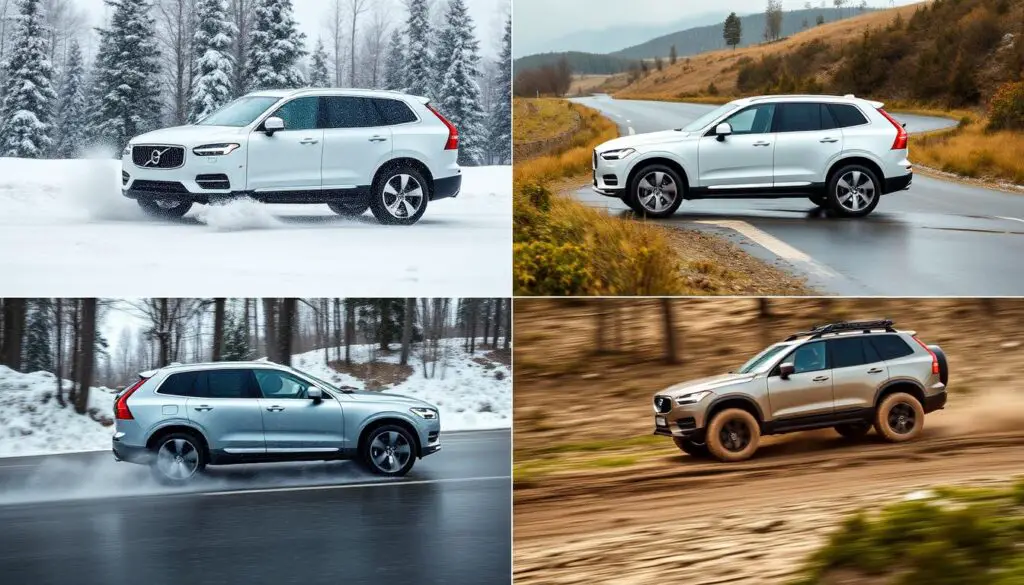
Based on our comprehensive analysis, here are our recommendations for when Volvo AWD is worth the investment:
Volvo AWD Is Recommended For:
- Drivers in regions with regular snow, ice, or rain
- Those who frequently travel to mountainous or rural areas
- Families prioritizing maximum safety in all conditions
- Drivers who need to tow boats, trailers, or other equipment
- Anyone who wants confident handling on unpredictable roads
- Those who keep their vehicles long-term (AWD adds resale value)
Front-Wheel Drive May Be Sufficient For:
- Drivers in consistently warm, dry climates
- Those primarily driving on well-maintained urban roads
- Budget-conscious buyers who rarely encounter adverse conditions
- Drivers prioritizing maximum fuel efficiency
- Those who lease short-term and upgrade frequently
- Urban commuters with access to good public transit during storms
Final Verdict on Volvo AWD
Volvo’s All-Wheel Drive system represents a thoughtful balance between safety, performance, and efficiency. While it may not be the most aggressive performance-oriented AWD system on the market, it excels at what matters most to Volvo’s core audience: providing confident, predictable handling in challenging conditions while maintaining reasonable fuel economy.
The integration with Volvo’s comprehensive safety systems makes their AWD implementation particularly effective at preventing accidents rather than just improving performance. For most drivers who experience seasonal weather changes or occasionally venture beyond perfectly maintained roads, Volvo AWD provides valuable peace of mind and tangible safety benefits that justify the additional cost.
If you’re considering a Volvo and live anywhere that experiences winter weather, regular rainfall, or you simply want the most stable and confidence-inspiring driving experience possible, opting for an AWD model is a worthwhile investment in both safety and driving enjoyment.
Experience Volvo All-Wheel Drive For Yourself
The best way to understand the benefits of Volvo’s AWD system is to experience it firsthand. Visit your local Volvo dealership to test drive an AWD model and discover the confidence it provides in all driving conditions.
Conclusion: Volvo’s Commitment to All-Wheel Drive Excellence

Volvo’s approach to all-wheel drive technology exemplifies the brand’s core values of safety, innovation, and environmental consciousness. From their early viscous coupling systems to today’s sophisticated electronic AWD and electric dual-motor setups, Volvo has consistently evolved their technology to provide drivers with confidence in challenging conditions while minimizing environmental impact.
What sets Volvo’s AWD apart is not just the mechanical implementation, but how seamlessly it integrates with the company’s holistic approach to vehicle safety and performance. The system works in concert with stability control, traction control, and driver assistance features to create a comprehensive safety net that helps prevent accidents before they happen.
Whether you’re navigating snowy mountain roads, dealing with rainy highway commutes, or simply want the most stable and predictable handling in all conditions, Volvo’s AWD system delivers a driving experience that aligns perfectly with the brand’s reputation for thoughtful, human-centric design. It’s not just about power distribution—it’s about giving drivers confidence and peace of mind, regardless of what Mother Nature has in store.


